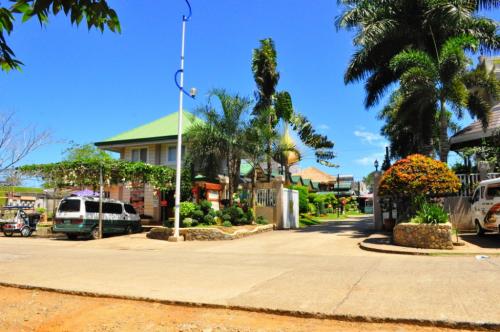Owing to its natural land form, the province of Zamboanga Sibugay is blessed with an impressive range of excellent tourist destinations
Owing to its natural land form, the province of Zamboanga Sibugay is blessed with an impressive range of excellent tourist destinations – interesting mountain formations, picture-perfect waterfalls, caves in which dwell thousands of bats as well as stalactites, hot springs, white sand beaches, and fish and sea snake sanctuaries.
Tantanan Bay is the largest fish sanctuary found in the province, encompassing an area of five hectares. Sibuguey Bay bounds the southern peripheries. Endowed with several coral formations that function naturally as fish sanctuaries, it is ideal for snorkeling and diving. Another notable fish sanctuary, situated within the municipality of Talusan, is Takushari. Within the island of Pulo Laum is a sanctuary for the propagation of sea snakes.
Zamboanga Sibugay is endowed with several islets that are ideal for beach resort development. Notable are Pandilusan Island in the municipality of Payao and Litayon Island in the municipality of Alicia. One characteristic that they have in common is their white sand beaches. In addition to these islets, there are also white sand atolls in both municipalities that are submerged during high tides.
Leading the province’s inland tourist attractions are the large caves found in the municipalities of Tungawan and Talusan as well as the Moalboal Cave in the municipality of Titay. Among the majestic waterfalls are Tagbilat, Dalisay, Tugop Muslim, Cobacob, Go-otoc, Malagandis, Basay, and Palina Falls in Ipil.
Political Subdivision
There are 16 municipalities comprising the province: Tungawan, R.T. Lim, Ipil, Titay, Naga, Siay, Kabasalan, Imelda, Diplahan, Buug, Malangas, Alicia, Payao, Mabuhay, Talusan and Olutanga. It has a total of 389 barangays under one Congressional District.
Geography
Zamboanga Sibugay has an approximate total land area of 322,830 hectares accounting for about 37.82 percent of the mother province of Zamboanga del Sur. It is geographically located at 123o 04’ 49.75” longitude and at 7o 42’ 14.89” latitude. To the north it intersects the common municipal boundaries of Kadawit, Tampilisan, and Godad in Zamboanga del Norte. In the west, it is bounded by the municipalities of Siraway, Siocon, and Balinguian, and the province of Zamboanga del Norte. On the south it is bounded by Sibuguey Bay. In the east, the municipalities of Bayog and Kumalarang both in the province of Zamboanga del Sur bound it. It is further bounded on the southwest by Zamboanga City.
Climate
The climatic condition of the province is moderately normal (climate type III). Annual rainfall varies from 1,599 mm to 3,500 mm. Temperature is relatively warm and constant throughout the year ranging from 22o C to 35o C. The province is situated outside the typhoon belt.
Industries
The leading industries are in the areas of bakery, rice and corn milling, food processing, and rattan and wood furniture production. The new players in the field are concrete products, garments, wax and candle factory, and other cottage industries.
Major crops produced include rice, corn, coconuts, rubber, fruit trees, vegetables, tobacco, coffee, cacao, and root crops. Livestock and poultry productions are predominantly small-scale backyard operations.
Population
The 2000 census reported a total population of 49,239 with an annual growth rate at 2.09%.
Dialects
The major dialects are Cebuano and Ilonggo. Tagalog, Ilocano, and other ethnic tongues are spoken as well.
Source:
